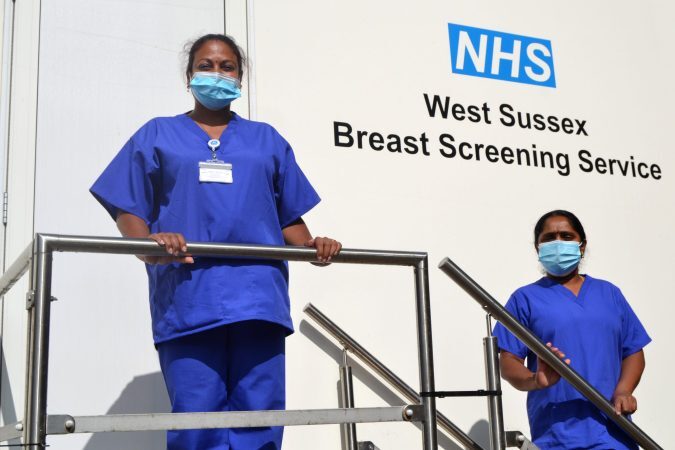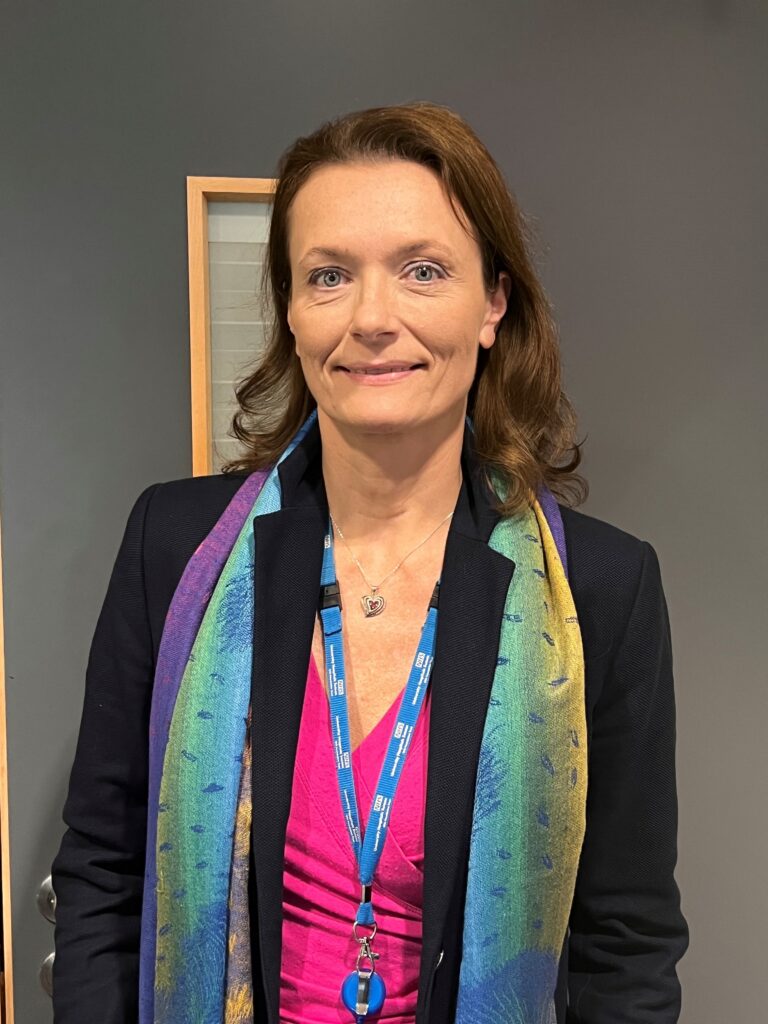
For Breast Cancer Awareness Month, University Hospitals Sussex NHS Foundation Trust is tackling common myths about breast screening that can prevent a person from getting screened and highlighting the importance of attending breast screening appointments to help find and treat cancers early.
Breast screening, also known as a mammogram, is an X-ray that checks for signs of breast cancers when they are too small to see or feel.
Women and people between 50-71 years old are invited by the NHS for breast screening every three years.
This service is free, and people are encouraged to get screened as the sooner breast cancer is found, the more likely it is to respond well to treatment.
Some people choose to not attend a screening for reasons such as they feel they are too busy; others are deterred by the pain or discomfort of having a mammogram and some people choose not to go because they feel fit and healthy and do not think they are at risk of developing breast cancer.
Some studies suggest that a few women and people don’t go for a screening because they are afraid of being diagnosed with breast cancer.
Dr Maggie Davies, Chief Nurse said: “Anyone can get breast cancer and the chance of getting it increases as you get older which can be frightening. That is why we are strongly urging women and people to accept their invitation to these quick and easy scans, so possible cancers can be detected as early as possible.”
Myth busters
This year, our clinicians are tackling these common myths that prevent women and people from attending their screening head on, to help people make an informed decision when it comes to getting screened.
Meet Dr Alexandra Christou and Dr Olga Strukowska, both Lead Consultant Breast Radiologists and our Directors of Breast Screening at UHSussex.
Dr Christou says…

The breast screening procedure is very painful.
“Whilst your breasts will be squeezed between two pieces of plastic to keep it still while the X-rays are taken – this takes a few seconds.
“Discomfort during a mammogram procedure varies from patient to patient. Some people find compression slightly uncomfortable, and some feel short-lived pain.
“However, for most people, it is less painful than having a blood test and compares with having a blood pressure measure. Most people tolerate the exam quite well and return to their daily routine straight after their appointment.”
I don’t need to go for a breast screening because I check myself regularly.
“It is important to be breast aware and report any changes in the breasts to your GP.
“However, a mammogram uses low doses of radiation to detect cancers that are too small to see or feel. It is well known that the sooner breast cancer is found, the more likely it is to respond well to treatment, and the less likely it is to need more extensive surgery.
“Also, it is more likely that you will be cured. In fact, breast screening saves around 1,300 lives each year in the UK.”
Screenings cause cancer.
“The mammogram is a low dose X-ray. The amount of radiation you’re exposed to during a mammogram is very low, and you would receive a similar amount from a return flight between London and Australia!
“The UK breast screening starts at the age of 50 till the age of 71 years old, with an interval of three years, minimizing the exposure of X-rays.”
I don’t have a family history of breast cancer, so I don’t need to be screened.
“Breast cancer is the most common type of cancer in the UK.
“Most women and people diagnosed with breast cancer are over the age of 50, but those younger can also get breast cancer.
“Some people will get breast cancer even without any other risk factors that they know of, including a family history of this type of cancer.”
Dr Strukowska says…

NHS breast screening programme is not available for women and people over 70.
“The NHS breast screening programme does not automatically invite women and people over 71 for breast screening. However, if you’re over 71, you have the right to free screening every three years. You can request it directly with your local breast screening unit.
“The risk of getting breast cancer actually increases with age, with about one third of all breast cancers occurring in women and people over 70. So it’s very important to continue to be screened for breast cancer after the age of 70.”
Transgender and non-binary people don’t need to have screenings.
“Breast screening is for anyone between the ages of 50 and 71 who has breasts due to either naturally occurring oestrogen or oestrogen hormone therapy.
“Patients registered with a GP as female, will be routinely invited for breast screening. This includes trans men and non-binary people assigned female at birth who haven’t had chest reconstruction.
“Patients registered with a GP as male, will not be invited for breast screening. Therefore, for trans women and non-binary people on long term hormone therapy, which can increase the risk of developing breast cancer, a GP can arrange a referral for these patients to have mammograms at a local hospital.”
I’m a man, I’m not at risk of breast cancer.
“Despite it being extremely rare, men can get breast cancer and around 1% of all breast cancer cases in the UK are in males.
“It is important to be aware of the most common symptoms for men, such as a painless lump, nipple discharge, nipple retraction, a sore ulcer in the skin of the breast, swelling of the breast, a lump or swelling under the arm and a rash on or around the nipple.
“To be safe, men who are experiencing any of these symptoms should seek advice from their GP.”
Breast aware
However, it’s not just breast screening that is vital. You should also become more breast aware because it’s important to know how your breasts usually look and feel. That way, you can spot any changes quickly and report them to a GP.
The NHS Breast Screening Programme has produced a 5-point plan for being breast aware:
- know what’s normal for you.
- look at your breasts and feel them.
- know what changes to look for.
- report any changes to a GP without delay.
- attend routine screening if you’re aged 50 to 70.
You should see a GP if you notice any of the following changes in your breasts:
- a change in the size, outline or shape of your breast.
- a change in the look or feel of the skin on your breast, such as puckering or dimpling, a rash or redness.
- a new lump, swelling, thickening or bumpy area in one breast or armpit that was not there before.
- a discharge of fluid from either of your nipples
- any change in nipple position, such as your nipple being pulled in or pointing differently.
- a rash (like eczema), crusting, scaly or itchy skin or redness on or around your nipple
- any discomfort or pain in one breast, particularly if it’s a new pain and does not go away (although pain is only a symptom of breast cancer in rare cases).
Find out how to best the check your breasts by using a guide to examining your breasts.